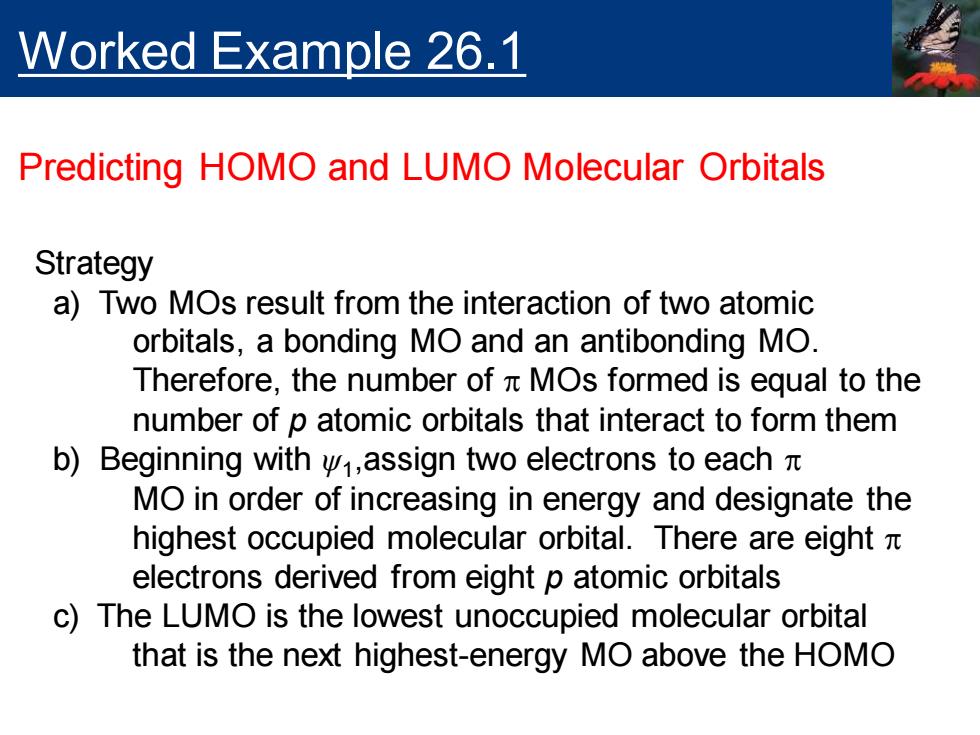正在加载图片...

Worked Example 26.1 Predicting HOMO and LUMO Molecular Orbitals Strategy a)Two MOs result from the interaction of two atomic orbitals,a bonding MO and an antibonding MO. Therefore,the number of n MOs formed is equal to the number of p atomic orbitals that interact to form them b)Beginning with v,assign two electrons to each MO in order of increasing in energy and designate the highest occupied molecular orbital.There are eight x electrons derived from eight p atomic orbitals c)The LUMO is the lowest unoccupied molecular orbital that is the next highest-energy MO above the HOMOWorked Example 26.1 Predicting HOMO and LUMO Molecular Orbitals Strategy a) Two MOs result from the interaction of two atomic orbitals, a bonding MO and an antibonding MO. Therefore, the number of p MOs formed is equal to the number of p atomic orbitals that interact to form them b) Beginning with ψ1 ,assign two electrons to each p MO in order of increasing in energy and designate the highest occupied molecular orbital. There are eight p electrons derived from eight p atomic orbitals c) The LUMO is the lowest unoccupied molecular orbital that is the next highest-energy MO above the HOMO